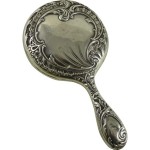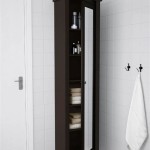How Do You Reattach A Side Mirror Glass?
A detached side mirror glass can be a frustrating inconvenience, obstructing visibility and potentially posing a safety hazard. Fortunately, reattaching the glass is often a straightforward process that can be accomplished with basic tools and a little patience. This article will outline the steps involved in reattaching a side mirror glass, covering various attachment methods and offering tips for a successful repair.
Before beginning any repair, it is crucial to identify the type of attachment mechanism used on the specific vehicle. Side mirror glass can be attached using adhesive pads, clips, or a combination of both. Consulting the vehicle's owner's manual or searching online forums dedicated to the specific make and model can provide valuable information about the mirror's design and attachment method. Having the correct information beforehand will ensure the repair process is smooth and efficient.
If the side mirror glass is attached using adhesive pads, the repair involves cleaning the existing surfaces and applying new adhesive. Begin by carefully removing any remaining adhesive residue from both the back of the mirror glass and the mirror housing. A plastic scraper or razor blade can be helpful for this task. Ensure the surfaces are thoroughly cleaned with a suitable glass cleaner and allowed to dry completely. This step is crucial for ensuring optimal adhesion of the new adhesive pads.
Once the surfaces are clean and dry, apply the new adhesive pads to the back of the mirror glass. Adhesive pads specifically designed for automotive side mirrors are recommended for optimal performance and longevity. Align the mirror glass carefully with the mirror housing and press firmly into place. Maintain pressure for the duration recommended by the adhesive manufacturer to ensure a secure bond. Avoid adjusting the mirror glass after it has been attached.
For mirrors secured with clips, the reattachment process involves aligning the clips with the corresponding slots or grooves on the mirror housing. Carefully examine the mirror housing to identify the location and orientation of the clips. The mirror glass may need to be tilted or angled slightly to engage the clips properly. Once the clips are aligned, gently push the mirror glass into place until it clicks securely. A gentle tug can confirm that the mirror is firmly attached.
Some side mirrors utilize a combination of adhesive and clips. In these cases, follow the adhesive application process described above before engaging the clips. Ensure the adhesive has sufficient time to bond before attempting to secure the clips. This combined approach provides a robust and secure attachment, minimizing the risk of the mirror glass detaching again.
In situations where the mirror glass is broken or severely damaged, replacement is the recommended course of action. Attempting to repair a broken mirror glass can be challenging and may not provide a satisfactory outcome. Replacement mirror glass can often be purchased from automotive parts stores or online retailers. Ensure the replacement mirror glass is compatible with the specific vehicle make and model. The replacement process typically involves removing the broken glass remnants and following the attachment procedures outlined above.
When handling broken glass, exercise extreme caution to avoid injury. Wear protective gloves and eye protection to safeguard against sharp edges and fragments. Carefully dispose of the broken glass in a puncture-resistant container to prevent accidental injuries. If the mirror housing is also damaged, it may require replacement as well. A damaged housing can compromise the structural integrity of the mirror and affect its adjustability.
Preventing future detachments involves regular inspection and maintenance of the side mirrors. Periodically check the condition of the adhesive pads or clips to ensure they are secure and undamaged. Avoid excessive force when adjusting the mirror glass, as this can strain the attachment mechanism and lead to detachment. If signs of wear or damage are observed, address them promptly to prevent further issues.
Extreme temperatures can also affect the adhesive properties of the bonding materials used in side mirrors. In regions with extreme heat or cold, consider using adhesive products specifically designed for these conditions to ensure optimal performance. Consult the adhesive manufacturer’s recommendations for temperature limitations and application guidelines. Proper preparation and application techniques are essential for achieving a strong and durable bond.

3 Ways To Replace A Car S Side View Mirror Wikihow

3 Ways To Replace A Car S Side View Mirror Wikihow

How To Replace Your Vehicle S Side View Mirror Glass

Replace Side View Mirror Glass Diy

How To Replace Side Mirror Glass On Your Car

Haynes Shows You How To Replace Your Car S Door Mirror Glass

Haynes Explains How To Replace Door Mirror Glass

3 Ways To Replace A Car S Side View Mirror Wikihow

How To Replace Side Mirror Glass Learn Blowing

Replace A Broken Side View Mirror Diy Family Handyman








